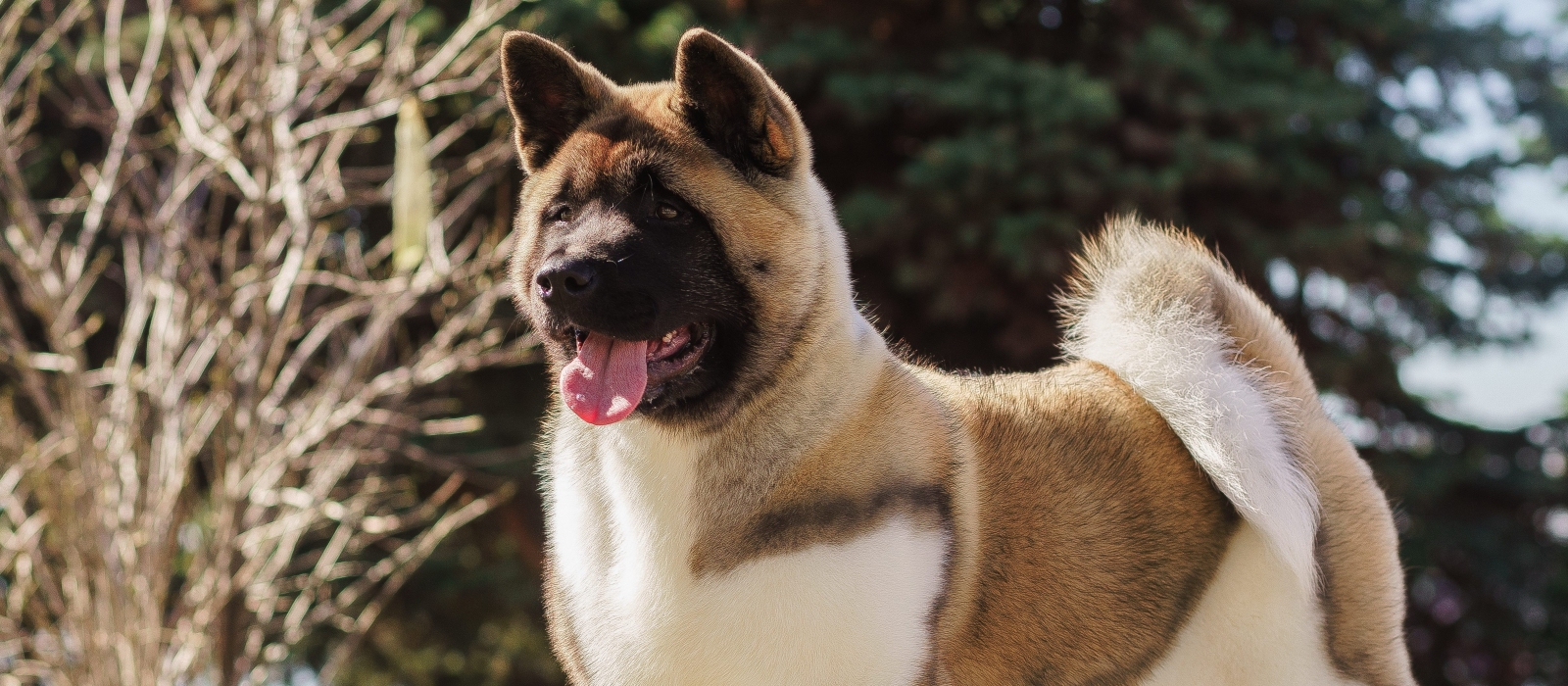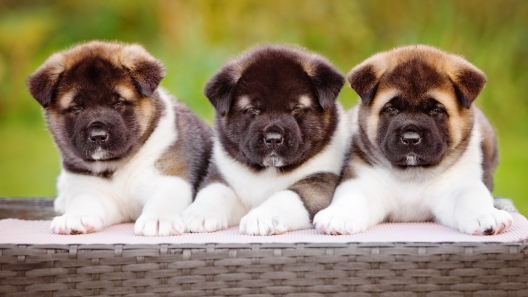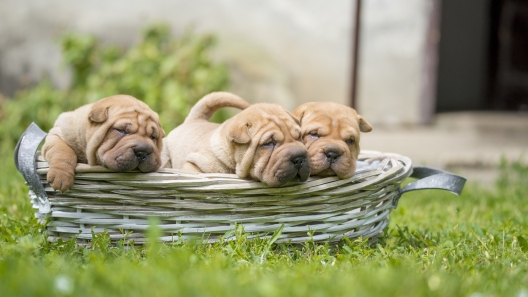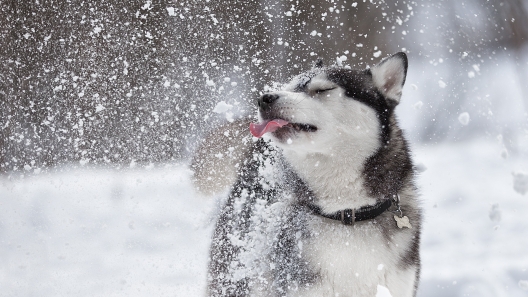-
Activity Level:
moderate
-
Shedding Level:
high
-
Grooming Level:
high
-
Trainability:
moderate
-
Good for Novice Owners:
moderate
-
Adaptability:
moderate
-
Kid/Pet Friendly:
sometimes
-
Prey Drive:
high
-
Watchdog:
very alert
- Average Size: Large
- Average Lifespan: 10-14 years
- Registered?: aca, akc
Akita Dog Breed Information
Overview
Temperament
Adaptability
Health
Owner Experience
Grooming
Activity Level
Size
Life Span
Did You Know?
The Akita is a striking working breed that originated in the Akita province of Japan during the 1600s. These dogs were bred to protect their territory and families from the Yezo bear that overran the small island. In addition to watchful guardians and protectors, Akitas also worked as hunting dogs.
Later given to the Emperor, the breed became a symbol of good luck, specifically happiness, good health, and a long life, throughout Japanese culture. Not only did this strong and dedicated breed protect Japanese royalty, but they were also used to hunt large game, such as deer, wild boar, and bear.
Helen Keller was gifted an Akita while visiting Japan in 1937 and is credited with bringing the first Akita to the United States. After World War II, the breed’s popularity surged as U.S. soldiers returned home from the Pacific and brought Akitas with them. One of these was Taro, a male that was the first Akita to be registered in the U.S. The AKC recognized the Akita in 1972 and they are a member of the Working Group.
One of the facts about Akitas is that it is still considered a symbol of good luck in Japan to own an Akita. These dogs make popular companion dogs and are known for being alert, loyal, and fearless, which makes them excellent watchdogs.
The Akita is an extremely loyal dog that is affectionate with their families and protective of them. Provided they are well-socialized, they get along well with children and can get along well with other animals that are part of the family. Akitas are one of the dog breeds that are good guard dogs. They are generally quiet dogs and use barking to alert you. They are good watchdogs because of this and their protective nature.
Due to their protective nature, they are naturally suspicious of strange people and animals. They don’t tend to naturally tolerate other animals outside of the family. Their high prey drive can be a challenge with smaller prey-type animals. An Akita may do well with smaller animals they were raised with, socialized with, and that they recognize as part of their family
Even well-socialized, an Akita may remain wary of strangers and may be aloof with them even after being introduced. It can take a while for an Akita to warm up to someone new, but once they recognize you as someone familiar and safe, they will open up and let you see their playful, affectionate side.
Poor socialization is one of the common causes of aggression in dogs. This intelligent breed should be socialized early and often with people, especially children, other dogs, and pets. If you decide to bring an Akita into your family, you will need to start socialization as early as possible and continue to socialize your puppy into adulthood. This will help them have a more favorable temperament when encountering unusual situations.
Akitas are moderately adaptable dogs. They do best in homes with fenced yards where they run. Although they can adapt to apartment living if enough time is dedicated daily to exercise, attention, and mental stimulation, they are generally not best suited for it.
Their protective nature can make them territorial. This, paired with their high prey drive, means they should only be let off-leash in secure areas. As a fluffy, double-coated dog breed, the Akita thrives in cold weather and is one of the dog breeds that love winter. As with other dogs, they are sensitive to heat. They also get bored easily and do not like to spend a lot of time alone.
Although they are one of the most independent dog breeds and can be aloof at times, they thrive on human companionship and like spending time around their families. They may be okay with some alone time, but mostly, they prefer to have their favorite humans within their sight so they can observe quietly and protect them.
Potential health concerns to be aware of in Akitas can include hip dysplasia, acquired myasthenia gravis, thyroid issues, progressive retinal atrophy, and some immune systems disorders that can affect the skin and hair. Good breeding practices make a big difference in the health of Akita puppies.
Reputable breeders will screen their dogs to ensure that they are not passing preventable issues to puppies. Make sure you are asking about the health and genetic history of both parents and about any health tests or clearances that have been done. The national breed club recommends a hip evaluation, an ophthalmologist evaluation, and a thyroid evaluation at a minimum.
Akitas are also one of the breeds that are at a higher risk for bloat in dogs. Bloat can be dangerous and can quickly become fatal if the stomach flips. It’s important to know how to reduce the risk and what symptoms to look for so you know when to get help.
Akitas are highly intelligent and loyal dogs. Although they pick up on things quickly, they are also independent and can be quite stubborn. As such, they are generally not recommended for first-time dog owners. Novice owners can successfully socialize and train an Akita, but puppy training classes or enlisting a professional dog trainer are recommended.
The Akita has a soft and dense undercoat and an outer coat that is straight and coarse. Although they tend to shed a little, they will blow their undercoat and shed a lot when the seasons change. Weekly brushing and daily brushing during seasonal shedding are usually enough to keep their coat looking great. They tend to be relatively clean dogs and don’t tend to easily develop an odor, so bathing is generally on an as-needed basis.
In addition to coat care, you will also need to take care of your Akita’s nails, ears, and teeth, and it is important to begin a routine at a young age. Cutting your dog’s nails once or twice monthly is a good start, but you may need to trim nails more often depending on how quickly they grow.
Regularly checking their ears on a weekly basis and carefully cleaning your dog’s ears as needed can help prevent ear infections. You also want to practice good dental care early and throughout your dog’s life to protect them from painful dental diseases later in life. Daily brushing, along with cleanings at the vet when needed, is ideal dental care for dogs.
Although the Akita is not a high-energy dog, they do still require a moderate amount of exercise each day to be happy and healthy. Daily walks plus some playtime or time to run are usually enough.
Because they get bored easily and are sturdy dogs, they may be up for more activity if you are. Just make sure you keep activities low impact until puppies finish growing and the vet clears them for high-impact activities to prevent damage to developing bones and joints.
Fully-grown Akitas usually stand 24-28 inches tall and weigh 70-130 pounds. On average, females stand 24-26 inches tall and weigh 70-100 pounds while males stand 26-28 inches tall and weigh 100-130 pounds.
Akitas generally live for 10-14 years on average.
In Japan, a statue of an Akita is associated with health, happiness, and a long life. It is common to give a small statue of the dog breed to a family who has just had a child.
When it comes to famous dogs, Hachiko, or Hachi, is the most famous Akita. He waited for his owner to come from work at the train station every day. One day, his owner passed away unexpectedly and never came off the train.
Hachiko spent 9 years at the train station waiting for his owner to come home. His story has been told in many books, documentaries, movies, and more. Hachi: A Dog’s Tale is one of the most well-known movies about this real-life loyal companion and tends to show up in lists of classic dog movies.









